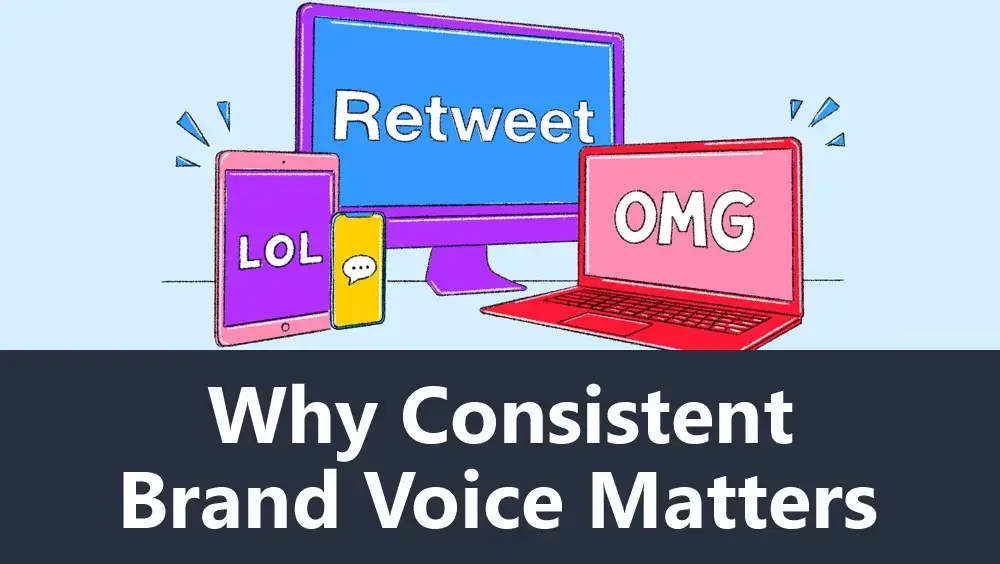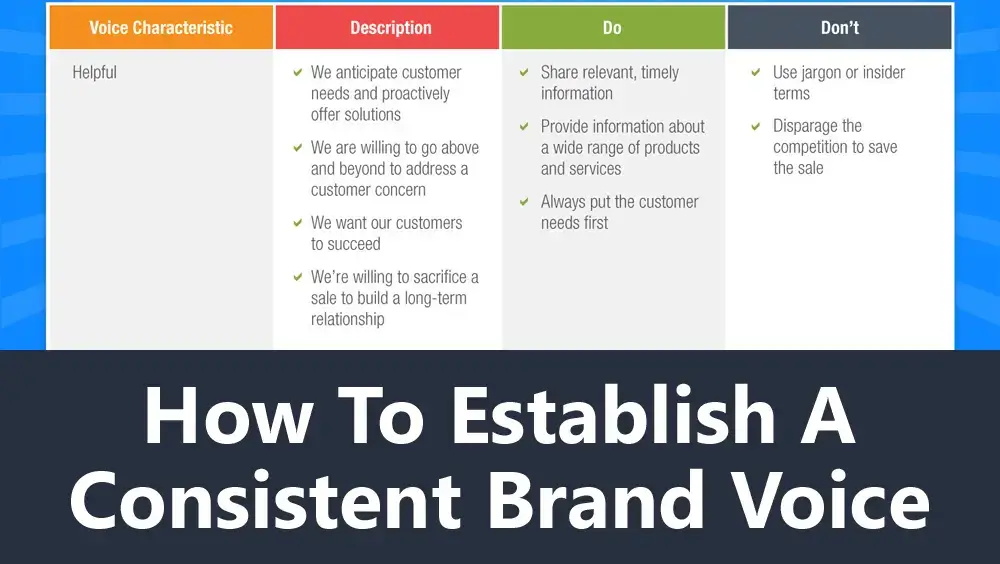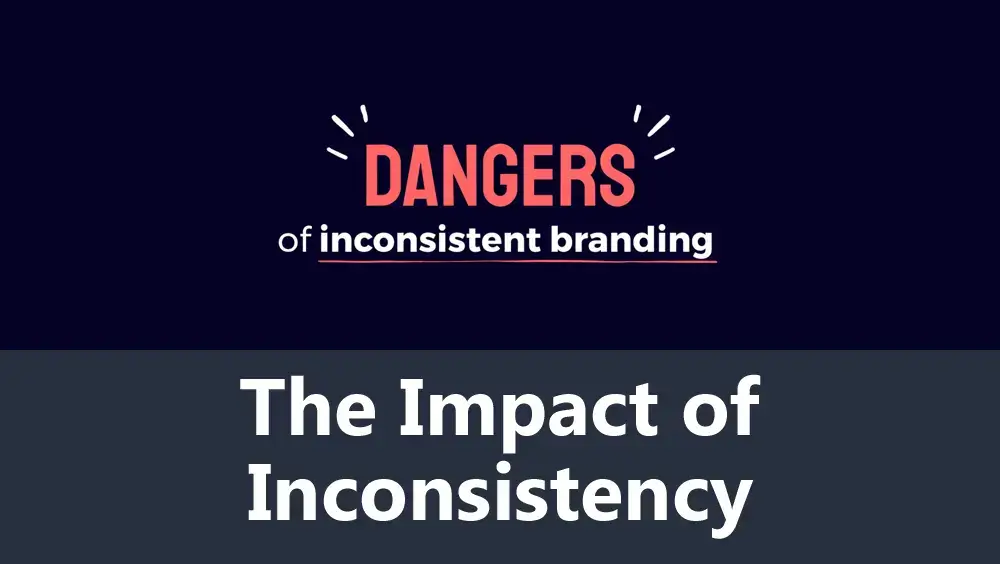As a business owner, you understand the importance of developing a brand identity that resonates with your target audience. However, did you know that consistent brand voice is equally crucial to your content marketing strategy? A consistent brand voice is the personality and tone that runs through all your content, conveying your brand’s values and messaging. It establishes your brand identity, creates trust and credibility with your audience, and generates brand loyalty.
In this article, we will explore the importance of consistent brand voice in content creation, and how to establish and maintain it across platforms. We will also examine the impact of inconsistency and provide real-life examples of brands that have succeeded or failed in creating a consistent brand voice.
Why Consistent Brand Voice Matters

Creating a consistent brand voice is essential for several reasons:
Establishing Brand Identity and Recognition
A consistent brand voice enables your audience to recognize your brand across different platforms and channels. It helps your brand stand out from your competitors, and your target audience can easily identify your messaging.
For example, the fast-food chain, McDonald’s, has a consistent brand voice that is recognizable worldwide. Its messaging is centered around convenience, affordability, and speed, and its branding elements such as the golden arches and red and yellow color scheme are consistent across all its touchpoints.
Creating Trust and Credibility with the Audience
A consistent brand voice helps create trust and credibility with your audience. When your audience is familiar with your brand’s messaging and values, they feel confident that you understand their needs, and you are the right solution provider.
For example, the outdoor apparel brand, Patagonia, has a consistent brand voice that is centered around sustainability and environmentalism. Its messaging focuses on its mission to reduce the environmental impact of its products and operations. By consistently communicating its values, Patagonia has gained the trust and loyalty of its customers.

Generating Brand Loyalty
Consistent brand voice helps create brand loyalty by fostering a deeper emotional connection between your audience and your brand. When your audience connects with your brand’s values and messaging, they are more likely to choose your brand over your competitors.
For example, the luxury car brand, Mercedes-Benz, has a consistent brand voice that emphasizes luxury, performance, and innovation. Its messaging and branding elements such as the iconic three-pointed star, are consistent across all its touchpoints. By consistently communicating its values and messaging, Mercedes-Benz has created a loyal customer base that is willing to pay a premium price for its products.
Avoiding Confusion and Strengthening Messaging
Consistent brand voice helps avoid confusion and strengthens your messaging by ensuring that your audience receives the same message across all your touchpoints. It also helps to ensure that your messaging is aligned with your business objectives.
For example, the shoe brand, Nike, has a consistent brand voice that is centered around empowering athletes and promoting active lifestyles. Its messaging and branding elements such as the iconic “swoosh” logo are consistent across all its touchpoints. By consistently communicating its values and messaging, Nike has created a strong brand image that resonates with its target audience.
How to Establish a Consistent Brand Voice

To establish a consistent brand voice, you need to define your brand voice, create a style guide, and train your content creators.
Define Your Brand Voice
Defining your brand voice involves identifying your brand values and personality and defining the tone, style, and language you will use to communicate with your audience. Your brand voice should align with your business objectives, target audience, and industry standards.
For example, if you are a financial institution targeting middle-aged adults, your brand voice should be professional, informative, and trustworthy. On the other hand, if you are a fashion brand targeting Gen Z, your brand voice should be trendy, authentic, and fun.
Create a Style Guide
Creating a style guide is essential to maintaining consistency across all your touchpoints. A style guide is a set of guidelines that your content creators can follow to ensure that your messaging, tone, and style are consistent.
Your style guide should include the use of specific words, phrases, and grammar, as well as examples of good and bad usage. It should also include guidelines for visual elements such as color schemes, typography, and imagery.
For example, the online retailer, Amazon, has a comprehensive style guide that includes guidelines for writing, design, and brand voice. Its style guide provides guidelines for the use of punctuation, capitalization, and tone of voice. It also provides guidelines for the use of visual elements such as logo placement, color schemes, and typography.
Train Your Content Creators
Training your content creators is essential to ensuring that they understand the importance of consistent brand voice and have the resources and feedback necessary to maintain it. Your content creators should be familiar with your brand voice guidelines, and you should provide them with examples and feedback to help them improve their content.
For example, the software company, HubSpot, has a content style guide and training program for its content creators. Its training program includes a series of modules that cover topics such as tone of voice, style, and writing tips. Its content creators also receive regular feedback from their peers and editors to help them improve their content.
Consistency Across Platforms

Maintaining consistency across all your touchpoints is essential to creating a consistent brand voice. However, you also need to adapt your brand voice to suit different platforms.
For example, the social media platform, Twitter, has a character limit that requires brands to be concise and creative with their messaging. On the other hand, a blog post allows for more in-depth content and a more conversational tone.
To maintain consistency across platforms, you should ensure that your messaging and values remain consistent, even as you adapt your tone and style to suit the platform. You should also ensure that your branding elements such as logos, color schemes, and imagery are consistent across all your touchpoints.
For example, the beverage company, Coca-Cola, has a consistent brand voice across all its touchpoints. Its messaging and branding elements such as the iconic red and white color scheme are consistent across all its touchpoints, including social media, advertising, and packaging.
The Impact of Inconsistency

Inconsistency can have a significant impact on your brand’s messaging, credibility, and loyalty. When your messaging is inconsistent, it can confuse your audience and dilute your brand image. Inconsistency can also damage your credibility and brand loyalty.
For example, the social media platform, Snapchat, faced a backlash when it released a redesign that was not consistent with its brand voice. The redesign was confusing to users and diluting the brand’s image as a fun and creative platform. Snapchat’s user engagement dropped, and its stock price plummeted.
Creating a consistent brand voice is essential to your content marketing strategy. A consistent brand voice helps establish your brand identity, creates trust and credibility with your audience, and generates brand loyalty. To create a consistent brand voice, you need to define your brand voice, create a style guide, and train your content creators. You should also maintain consistency across platforms and avoid inconsistency, which can damage your brand image and credibility.
By following these guidelines, you can create a consistent brand voice that resonates with your target audience and helps you achieve your business objectives.

The article “Why Consistent Brand Voice Matters in Content Creation” explores the importance of creating and maintaining a consistent brand voice across all touchpoints.
Here are the main points discussed in the article:
1. Introduction: The article begins by defining brand voice and highlighting its significance in content creation. It also provides an overview of the article’s structure.
2. Why Consistent Brand Voice Matters: This section discusses why having a consistent brand voice is crucial for establishing brand identity and recognition, creating trust and credibility with the audience, generating brand loyalty, and avoiding confusion.
3. How to Establish a Consistent Brand Voice: This section outlines three steps to establish a consistent brand voice: defining your brand voice, creating a style guide, and training your content creators. It provides examples of successful brand voices and the training programs used to maintain consistency.
4. Consistency Across Platforms: Maintaining consistency across all touchpoints is crucial to creating a consistent brand voice. This section discusses the need to adapt brand voice to suit different platforms while ensuring that messaging and values remain consistent. It also provides an example of a brand that has succeeded in maintaining consistency across platforms.
5. The Impact of Inconsistency: Inconsistency can have a significant impact on a brand’s messaging, credibility, and loyalty. This section provides an example of a brand that faced backlash due to inconsistency.
6. Conclusion: The article concludes by summarizing the importance of a consistent brand voice and providing a call to action for brands to establish and maintain consistency across all touchpoints.
7. FAQs: The article ends with a list of frequently asked questions about brand voice, its impact on content creation, and how to establish and maintain consistency across different platforms.
By following the guidelines outlined in this article, brands can create a consistent brand voice that resonates with their target audience and helps achieve their business objectives.

“Why Consistent Brand Voice Matters in Content Creation,” here’s an action plan for businesses to establish and maintain a consistent brand voice:
1. Define Your Brand Voice: Identify your brand values and personality and define the tone, style, and language you will use to communicate with your audience. Ensure that your brand voice aligns with your business objectives, target audience, and industry standards.
2. Create a Style Guide: Develop a comprehensive style guide that includes guidelines for the use of specific words, phrases, and grammar, as well as guidelines for visual elements such as color schemes, typography, and imagery. The style guide should be accessible to all content creators in your organization.
3. Train Your Content Creators: Provide training programs to ensure that your content creators understand the importance of consistent brand voice and have the resources and feedback necessary to maintain it. The training should include guidelines for tone of voice, style, and writing tips. Content creators should also receive regular feedback from their peers and editors to help them improve their content.
4. Maintain Consistency Across Platforms: Ensure that your messaging and values remain consistent, even as you adapt your tone and style to suit different platforms. You should also ensure that your branding elements such as logos, color schemes, and imagery are consistent across all your touchpoints.
5. Measure the Impact of Consistent Brand Voice: Track metrics such as website traffic, social media engagement, and conversion rates to measure the impact of a consistent brand voice on audience engagement. You can also conduct surveys and focus groups to gather feedback from your audience about their perception of your brand voice.
By following this action plan, businesses can establish and maintain a consistent brand voice that resonates with their target audience and helps achieve their business objectives.

Here are 10 great frequently asked questions about the importance of consistent brand voice in content creation, along with their answers:
1. What is a brand voice?
A brand voice is the personality and tone that runs through all your content, conveying your brand’s values and messaging. It helps establish your brand identity and creates consistency across all your touchpoints.
2. Why is having a consistent brand voice important?
Having a consistent brand voice is crucial for establishing brand identity and recognition, creating trust and credibility with the audience, generating brand loyalty, and avoiding confusion.
3. How do I establish a consistent brand voice?
To establish a consistent brand voice, you need to identify your brand values and personality and define the tone, style, and language you will use to communicate with your audience. You should also create a comprehensive style guide and provide training to your content creators.
4. How do I maintain consistency across different platforms?
To maintain consistency across different platforms, you should ensure that your messaging and values remain consistent, even as you adapt your tone and style to suit the platform. You should also ensure that your branding elements such as logos, color schemes, and imagery are consistent across all your touchpoints.
5. What happens if my brand does not have a consistent brand voice?
If your brand does not have a consistent brand voice, it can confuse your audience and dilute your brand image. Inconsistency can also damage your credibility and brand loyalty.
6. Can I have different brand voices for different products or services?
Yes, you can have different brand voices for different products or services. However, your brand values and personality should remain consistent across all touchpoints.
7. What should I include in my brand style guide?
Your brand style guide should include guidelines for the use of specific words, phrases, and grammar, as well as guidelines for visual elements such as color schemes, typography, and imagery. It should also provide examples of good and bad usage.
8. How do I train my content creators to maintain a consistent brand voice?
To train your content creators, you should provide guidelines for tone of voice, style, and writing tips. Content creators should also receive regular feedback from their peers and editors to help them improve their content.
9. How do I measure the impact of a consistent brand voice on audience engagement?
You can measure the impact of a consistent brand voice on audience engagement by tracking metrics such as website traffic, social media engagement, and conversion rates. You can also conduct surveys and focus groups to gather feedback from your audience about their perception of your brand voice.
10. Can I change my brand voice over time?
Yes, you can change your brand voice over time. However, any changes should be communicated clearly to your audience, and you should ensure that your new brand voice aligns with your business objectives and target audience.
Conclusion
In summary, the article “Why Consistent Brand Voice Matters in Content Creation” emphasizes the importance of creating and maintaining a consistent brand voice across all touchpoints. It highlights that having a consistent brand voice is crucial for establishing brand identity and recognition, creating trust and credibility with the audience, generating brand loyalty, and avoiding confusion. The article provides an action plan for businesses to establish and maintain a consistent brand voice, including defining brand values, creating a style guide, training content creators, maintaining consistency across platforms, and measuring the impact of consistent brand voice.
In conclusion, a consistent brand voice is essential for any business looking to establish a strong brand identity, build trust with its audience, and generate brand loyalty. By following the guidelines outlined in this article, businesses can establish and maintain a consistent brand voice that resonates with their target audience and helps them achieve their business objectives. Creating a style guide, training content creators, and maintaining consistency across platforms are essential steps to achieving a consistent brand voice. Consistent brand voice can be measured using various metrics such as website traffic, social media engagement, and conversion rates. A consistent brand voice is a valuable investment for any business looking to build and maintain a strong brand identity.




